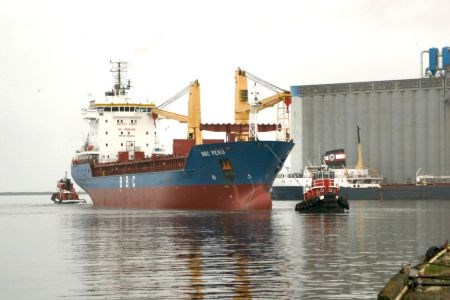The Port of Thunder Bay is facing a monumental year of change beginning this summer with the end of the Canadian Wheat Board's monopoly on wheat and barley exports.
An early sign is the reopening of the dormant Viterra C grain elevator on the city's waterfront which is part of a larger $6.1-billion deal by Swiss-based Glencore PLC to take over Viterria. The takeover would flip Viterra's Canadian assets over to Richardson International.
“There are a lot of changes happening. There's never been a Seaway without the wheat board,” said Tim Heney, chief executive officer of the Port of Thunder Bay.
But it could signal a banner year of grain movement through the western Lake Superior port that may be somewhat reminiscent of the robust volumes of the 1970s and 1980s.
Last year, grain traffic through Thunder Bay was up 20 per cent with a record year established for canola at 1.4 million tonnes. This year, for the first time in history, there will be more canola planted in the Prairies than wheat.
With a total port storage capacity of 1.2 million tonnes, the largest in North America, the reopening of the Viterra elevator only stands to improve those statistics.
Post-wheat board, Heney said it should only make Thunder Bay more attractive to shippers because of the way Canadian grain will be marketed and transported.
For more than 60 years, farmers were forced to sell through the wheat board until the federal government passed legislation last year to open the market to competition this August.
“They controlled the storage on the farms and would call the grain in when they deemed it necessary,” said Heney. “Now the farmer will want to sell his own grain at his decretion when he thinks the market is right. So those with storage will be able to accommodate that.”
The major international grain handlers like Cargill, Richardson and Glencore will have greater control on choice of ports which could result in Thunder Bay siphoning off traffic from its federally subsidized rival in Churchill, Manitoba.
“We have the major players with facilities here and in the lower river area, and they have their own supply chain,” said Heney. “Most of them are long-time believers in the Seaway.”
As a board member of the Western Transportation Advisory Council, Heney said Thunder Bay has always been held in high esteem by Western grain haulers.
“Thunder Bay is considered by those in the West to be part of the West, but being in Ontario, it's always a challenge for us.”
In recent years, the port has been steadily diversifying its cargo mix beyond just moving Western grain, coal and potash.
Mine expansion and mineral exploration in northwestern Ontario has generated plenty of excitement in the region after years of watching the erosion of the forestry industry.
Last October, Keefer Terminal unloaded some oversized pieces of Spanish-made milling equipment that were destined for Timmins and Lake Shore Gold's new Bell Creek Mill expansion.
Heney said the port's road and rail connections can accommodate those kinds of cargoes for mine start-ups, but it doesn't always provide steady business.
A bigger opportunity is a city-wide effort to convince Cliffs Natural Resources to locate its much-coveted Ring of Fire ferrochrome processing plant on the shores of Lake Superior.
Access to the Great Lakes and the St. Lawrence Seaway would allow Cliffs to cheaply ship Ontario ferrochrome to international stainless steel producers.
The infrastructure is already in place with two dry bulk transfer facilities at Thunder Bay Terminals and Valley Camp.
Heney said Thunder Bay Terminals is capable of moving 11 million tonnes a year, but is only handling one million tonnes of mostly coal and potash.
“Both are running well under capacity. They could do it without any investment.”
Still on the schedule for this year are a number of inbound project cargoes of large dimensional freight such as wind turbine components for developments in Western Canada and mill upgrading components for the Alberta oilsands.
“There is lots of activity coming this year,” said Heney with more turbines and transformers on the schedule as the oilsands starts to surge again.
In 2011, the port established a record year of project cargoes with more than 100,000 tonnes moved.
“To put it in perspective, it's about 10 per cent of the entire Seaway's project cargoes. I think we'll be able to top that this year.”
To handle this freight, Keefer is improving its lift capacity with the arrival this July of a mobile port crane. The LHM 320 rubber-tired travelling crane will be capable of lifting 104 tonnes at 18 metres.
Until now, the port always relied on vessels that carried their own unloading gear. Heney said the new crane should really open up access to other shippers and marine carriers.
“We're trying to provide a competitive advantage on this corridor.”




